See Fig. A mass of 6 kg is suspended by a rope of length 2 m from the ceiling. A force of 50 N in the horizontal direction is applied at the mid- point P of the rope, as shown. What is the angle the rope makes with the vertical in equilibrium ? (Take g=10ms−2 ). Neglect the mass of the rope.
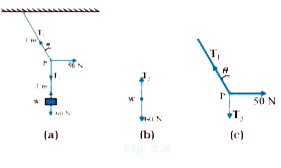
Figures (b) and (c) are known as free-body diagrams. Figure (b) is the free-body diagram of W and Fig. (c) is the free-body diagram of point P. Consider the equilibrium of the weight W.
Clearly T2=6×10=60N
Consider the equilibrium of the point P under the action of three forces - the tensions T1 and T2, and the horizontal force 50 N. The horizontal and vertical components of the resultant force must vanish separately :
T1cosθ=T2=60N
T1sinθ=50N
which gives that
tanθ=56orθ=tan−1(56)=40∘
Topper's Solved these Questions
- LAW OF MOTIONBOOK - NCERT BANGLISHCHAPTER - LAW OF MOTIONEXERCISE - EXERCISE
23 Videos
- LAW OF MOTIONBOOK - NCERT BANGLISHCHAPTER - LAW OF MOTIONEXERCISE - EXERCISE (ADDITIONAL EXERCISE)
17 Videos
- KINETIC THEORYBOOK - NCERT BANGLISHCHAPTER - KINETIC THEORYEXERCISE - ADDITIONAL EXERCISE
3 Videos
- MECHANICAL PROPERTIES OF FLUIDS BOOK - NCERT BANGLISHCHAPTER - MECHANICAL PROPERTIES OF FLUIDS EXERCISE - EXERCISE
43 Videos
Similar Questions
Give the magnitude and direction of the net force acting on (a) a drop of rain falling down with a constant speed, (b) a cork of mass 10 g floating on water, (c) a kite skillfully held stationary in the sky, (d) a car moving with a constant velocity of 30 km/h on a rough road, (e) a high-speed electron in space far from all material objects, and free of electric and magnetic fields.
View SolutionFigure shows the position-time graph of a body of mass 0.04 kg. Suggest a suitable physical context for this motion. What is the time between two consecutive impulses received by the body ? What is the magnitude of each impulse ?

View SolutionA metre long narrow bore held horizontally (and closed at one end) contains a 76 cm long mercury thread, which traps a 15 cm column of air. What happens if the tube is held vertically with the open end at the bottom ?
View SolutionExplain why
The blood pressure in humans is greater at the feet than at the brain.
View SolutionA mass of 4kg is suspended by a rope of length 4m from a ceiling. A force of 20N in the horizontal direction is applied at the mid-point of the rope as shown in figure. What is the angle which the rope makes with the vertical in equilibrium? Neglect the mass of the rope. Take g=10ms^(-2) .
View SolutionA mass of 6 kg is suspended by a rope of length 2 m from the ceilling A force of 50 N in the horizontal direction is applied at the mid - point P of the rope as shown . What is the angle the rope makes with the vertical in equilibrium ? (Take = 10 ms^(-2) ) . Neglect mass of the rope .
View SolutionA mass of 10 kg is suspended vertically by a rope of length 2 m from a ceiling. A force of 60 N is applied at the middle point of the rope in the horizontal direction, as shown in Fig. Calculate the angle the rope makes with the vertical. Neglect the mass of the rope and take g=10ms−2.
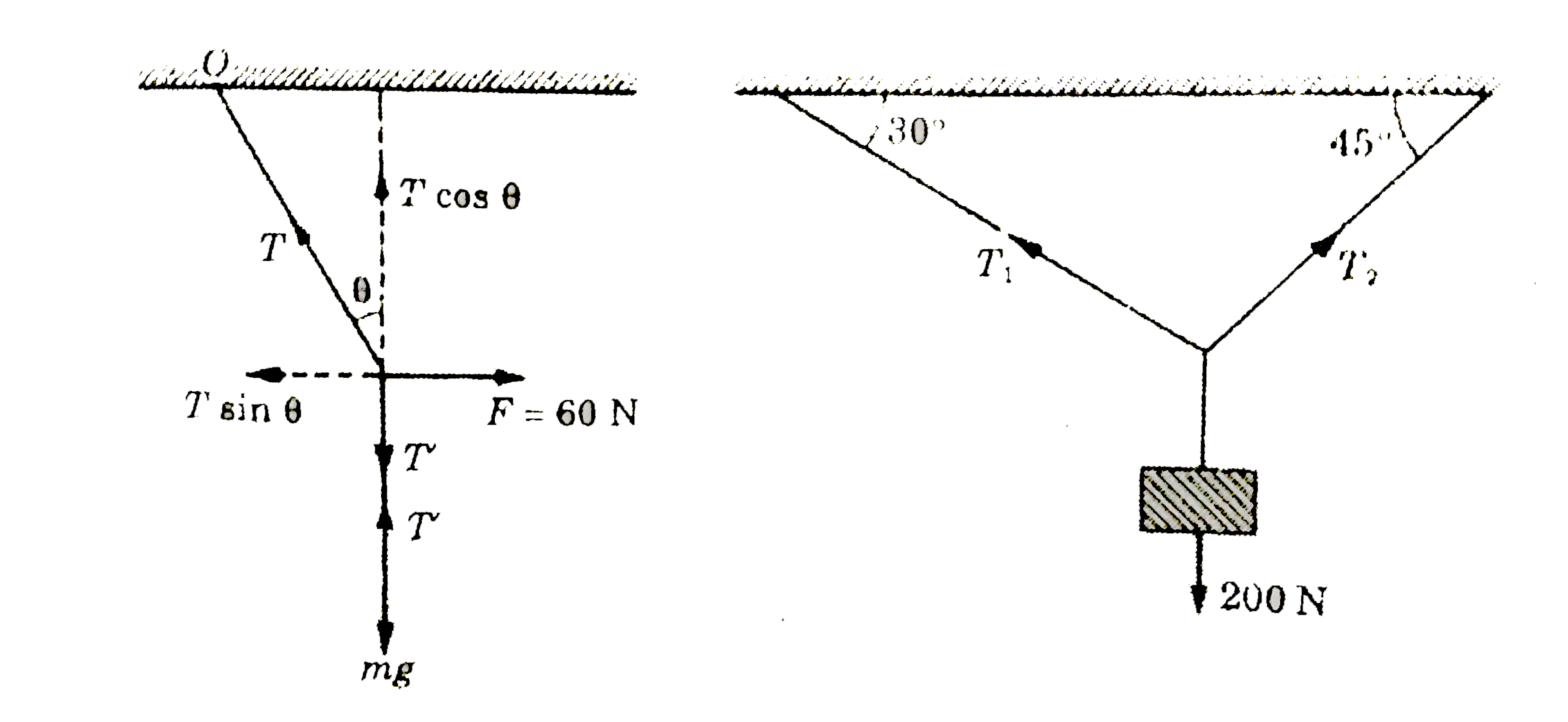
View SolutionA mass of 20 kg is suspended by a rope of length 2 m from a ceiling. A force of 173.2 N in the horizontal direction is applied at the midpoint of the rope as shown in Fig. What is the angle the rope makes with the horizontal in equilibrium ? Take g = 10 ms^(-2) . Neglect mass of the rope.
View SolutionA mass of 20 kg is suspended by a rope of length 4 m from the ceiling. A force of 60 N is applied at the midpoint of the rope in the horizontal direction. What is the angle made by the rope with the vertical in equilibrium? Assume that the mass of the rope is negligible and g=10m/s2
View SolutionA mass of 3kg is suspended by a rope of length 2m from the ceiling. A force of 40 N in the horizonal direction is applied at midpoint P of the rope as shown. What is the angle the rope makes with the vertical in equilibrium and the tension in part of string attached to the ceiling? (Neglect the mass of the rope, g=10m/s2)
View SolutionA mass of 10 kg is suspended by a rope of length 2.8m from a ceiling. A force of 98 N is applied at the midpoint of the rope as shown in figure. The angle which the rope makes with the vertical in equilibrium is
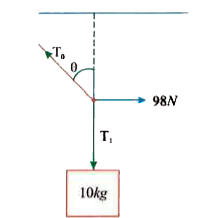
View SolutionSee Fig. A mass of 6 kg is suspended by a rope of length 2 m from the ceiling. A force of 50 N in the horizontal direction is applied at the mid- point P of the rope, as shown. What is the angle the rope makes with the vertical in equilibrium ? (Take g=10ms−2 ). Neglect the mass of the rope.
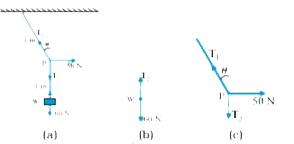
View SolutionA mass of 6 kg is suspended by a rope of length 2 m from the ceilling A force of 50 N in the horizontal direction is applied at the mid - point P of the rope as shown . What is the angle the rope makes with the vertical in equilibrium ? (Take = 10ms−2) . Neglect mass of the rope .
View SolutionA mass of 3kg is suspended by a rope of length 2m from the ceiling. A force of 40N in the' horizontal direction is applied at midpoint P of the rope as shown. What is the angle the rope makes with the vertical in equilibrium and the tension in part of string attached to the ceiling ? (Neglect the mass of the rope, g=10m/s2)
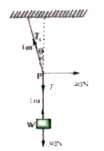
View SolutionA mass of 6 kg is suspended by a rope of length 2 m from the ceiling. A force of 50 N in the horizontal direction is applied at the midpoint P of the rope, as shown. What is the angle the rope makes with the vertical in equilibrium ? (Take g = 10 ms-2). Neglect the mass of the rope.
View Solution

